Key Points and Summary – The Air Force will retain select “Platinum” F-15C/Ds for homeland defense even as it fields more F-15E/EXs—because the Eagle still delivers.
-With a near-perfect air-to-air record and Mach-2-plus speed, upgraded F-15s gain AESA radar for longer, cleaner detection, IRST to hunt in heavy jamming, and the ADCP II mission computer to fuse data and enable future software drops.

Two U.S. Air Force F-15EX Eagle IIs assigned to the 85th Test and Evaluation Squadron, Eglin Air Force Base, Florida, taxi after landing at Kadena Air Base, Japan, July 16, 2025. Local units conducted integration and familiarization training with the F-15EX. (U.S. Air Force photo by Airman 1st Class Arnet Shayne Tamayo)
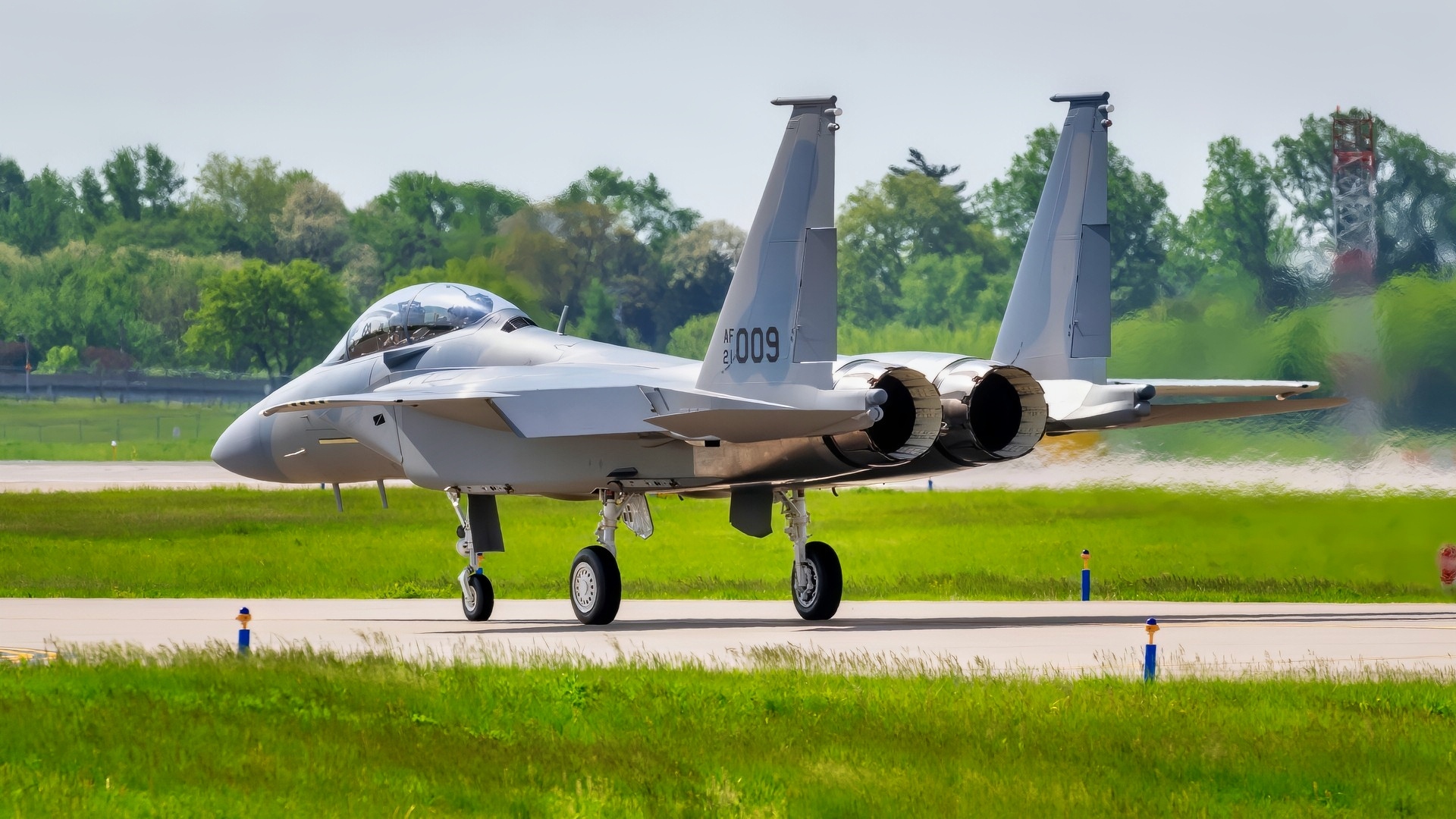
F-15EX-9 in St. Louis Missouri, shortly before delivery to Portland Air National Guard Base, Ore. (Boeing/Eric Shindelbower)
-Like the B-52 and F-16, structural life-extension and avionics refreshes turn a legacy airframe into a modern fighter, preserving capacity while NGAD matures.
-Bottom line: commanders still want F-15s on the line—fast, reliable, and now digitally supercharged.
BONUS – We have included photos from the National Security Journal’s recent visit to a recently retired F-15 at the Smithsonian outside Washington, DC.
The F-15C/D Is Saying No Way To Retirement
It comes as no surprise that the United States Air Force is preparing to extend the service life of its F-15C/D fleet for many years.
The jet has a near-perfect combat record, is among the fastest fighters to date, and remains highly sought after by combatant commanders worldwide.
The F-15 is renowned for never having lost a dogfight or air-to-air engagement in its entire history, and the platform is considered capable of traveling at F-22-like speeds of Mach 2.2 or faster.
The F-15’s thrust-to-weight ratio may help explain its unparalleled success in air warfare. An interesting compilation from World Defense lists the F-15 as having a 1.29 thrust-to-weight ratio, right next to the Russian Su-35 at 1.30. The F-22, however, when outfitted with round nozzles, can hit a 1.37 thrust-to-weight ratio, according to the assessment.
The Air Force plan, as articulated in Air & Space Forces magazine, is to retain a number of its Platinum F-15C/D models for homeland defense as the majority of the active-duty Air Force fleet transitions to more F-15Es and F-15EXs.
The plans were included in an Air Force report to Congress, as required by the latest defense bill.
Upgrade Success for F-15
Perhaps the most significant reason for the extension is the widely recognized reality that successful upgrades can transform a legacy fighter or bomber into a modern, competent, and relevant aircraft equipped for major modern combat operations.
Airframes themselves often remain viable for decades beyond an aircraft’s intended or expected service life, particularly if reinforced structurally.
This has proven to be the case with the C-130, F-16, and the famous Vietnam-era B-52. This classic aircraft now features a new engine, new weapons bay, new communications technology, and new sensing and avionics.
Today’s B-52 will fly farther and faster and likely launch drones, fire hypersonic weapons, and carry an unprecedented arsenal into war.
Similarly, overall flight hours for the Air Force’s F-16 have been extended by several thousand due to its successful SLEP, Service Life Extension Program.
The F-16 SLEP has not only included avionics, sensing, and communications technology but also retrofitted several F-35 components into the aircraft, such as its Active Electronically Scanned Array (AESA) radar.
F-15 Upgrades Explained
Various versions of the F-15 are also receiving AESA radar upgrades, technologies that can increase the range and accuracy with which enemy targets can be detected and verified. AESA, in particular, is engineered to detect a wide range of threats at any given time and can cover a growing number of frequencies.
The range and image fidelity of a radar system are, in large measure, determined by the number of its Transmit/Receive modules and the “packaging” of how densely and effectively they are engineered into the nose radome of an aircraft.
Therefore, an F-15, which has a significantly more extended and more precise detection range, can effectively adjust to a modern threat environment and identify potential enemy targets from much greater distances.
The F-15 has also been engineered with an extremely powerful Advanced Display Core Processor II computer, a machine with processing speed so fast it can perform 87 billion functions per second.
New High-Speed Computer
A significant US Air Force essay from 2016 catalogs the first flight of the ADCP II on an F-15.
“The ADCP II high-speed processing and interface designs enable advanced systems integration, increased mission effectiveness, augmented fault-tolerance, enhanced system stability and aircrew survivability,” the Air Force essay explains.
According to the US Air Force, the most critical element of the computer upgrade is that the new computer will support ongoing aircraft upgrades that dramatically improve performance capacity and allow for continued software enhancements.
The ADCP II supports the Eagle Passive/Active Warning Survivability System and the well-known and highly impactful Infrared Search and Track Systems (IRST).
These technologies greatly enhance the aircraft’s ability to operate in a high-threat electronic warfare (EW) “Jamming” environment.
IRST is also integrated into the US Navy’s F/A-18 and is credited with greatly improving targeting precision, range, and accuracy.
F-15 Up Close: Our Visit With an F-15 Fighter
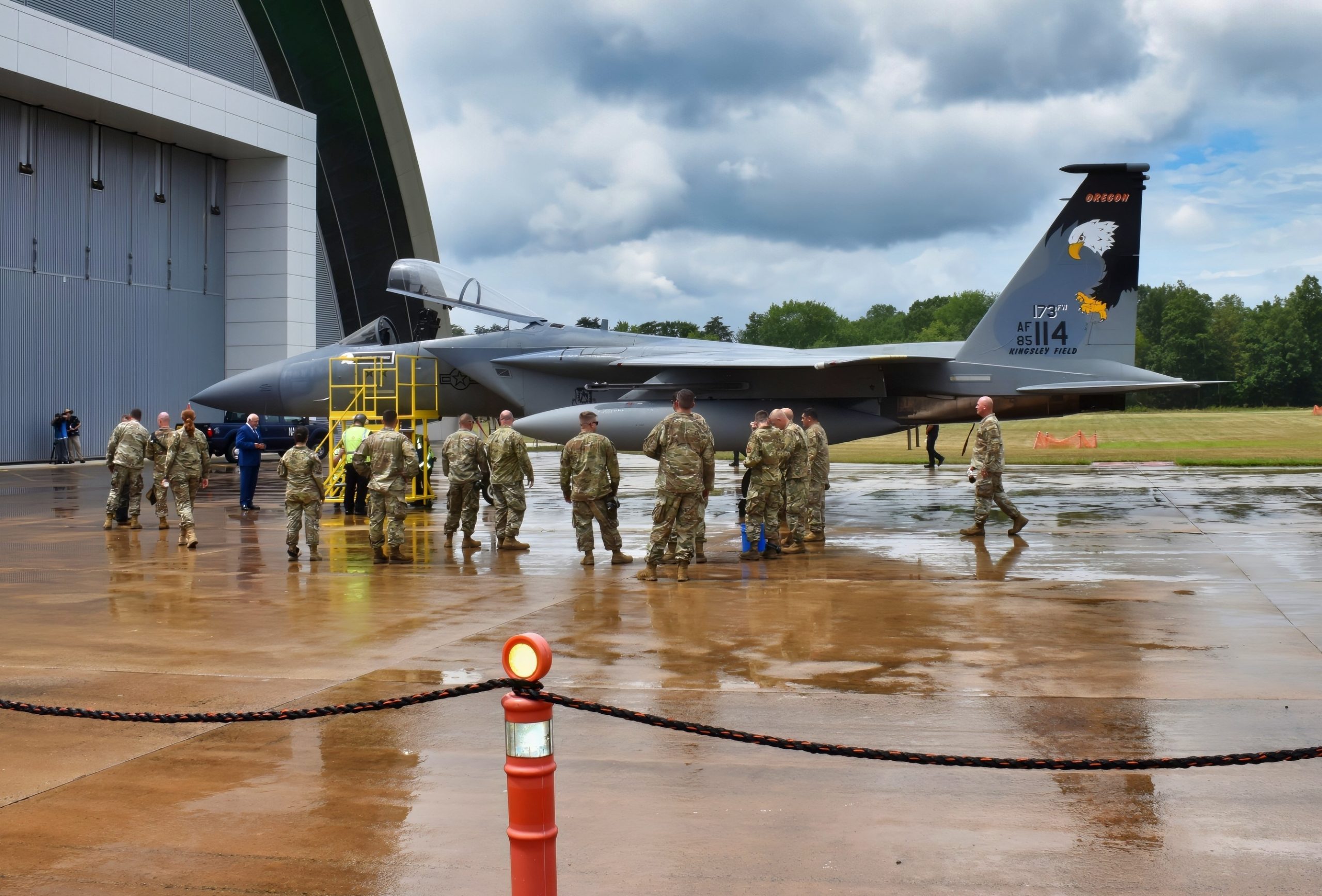
F-15C Fighter Coming in From Last Flight. Image Credit: National Security Journal.
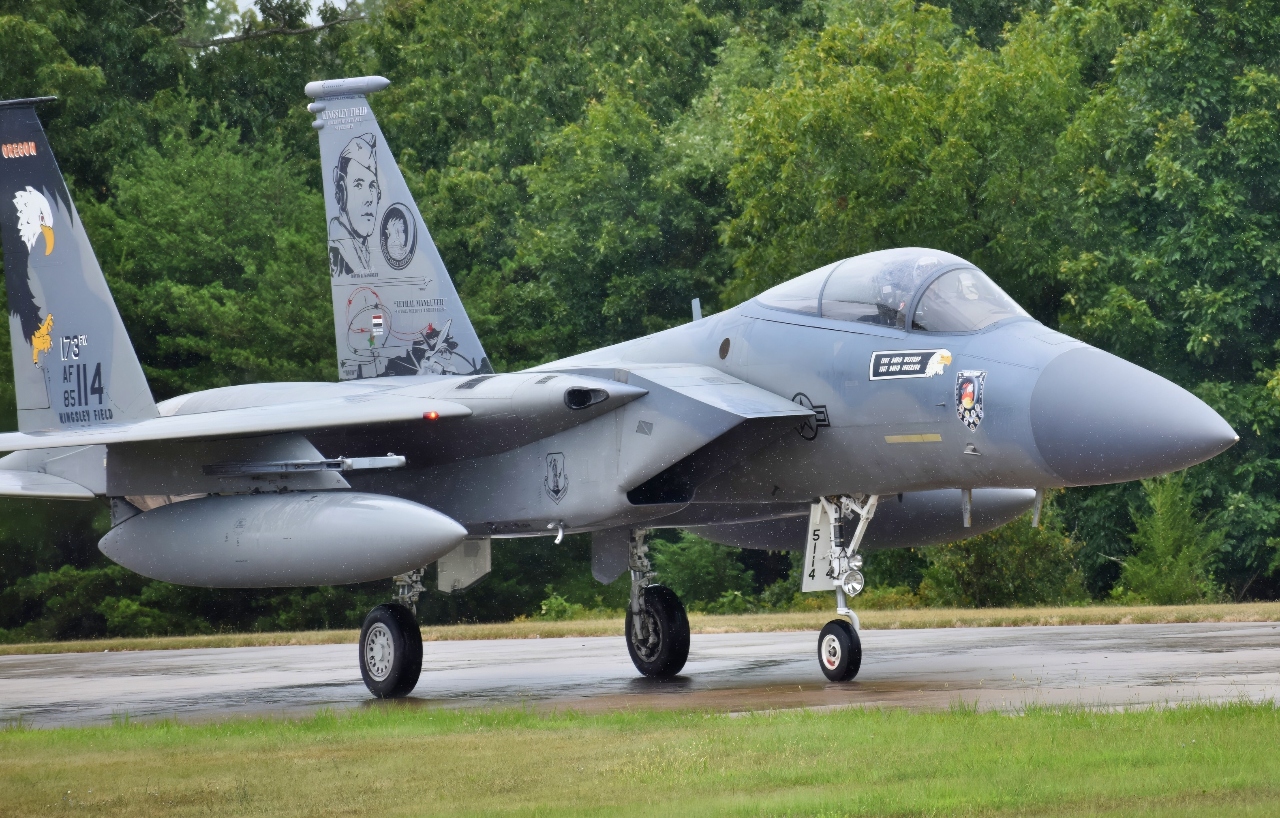
F-15C Fighter on the Tarmac. Image Credit: National Security Journal. Taken on August 13, 2025.
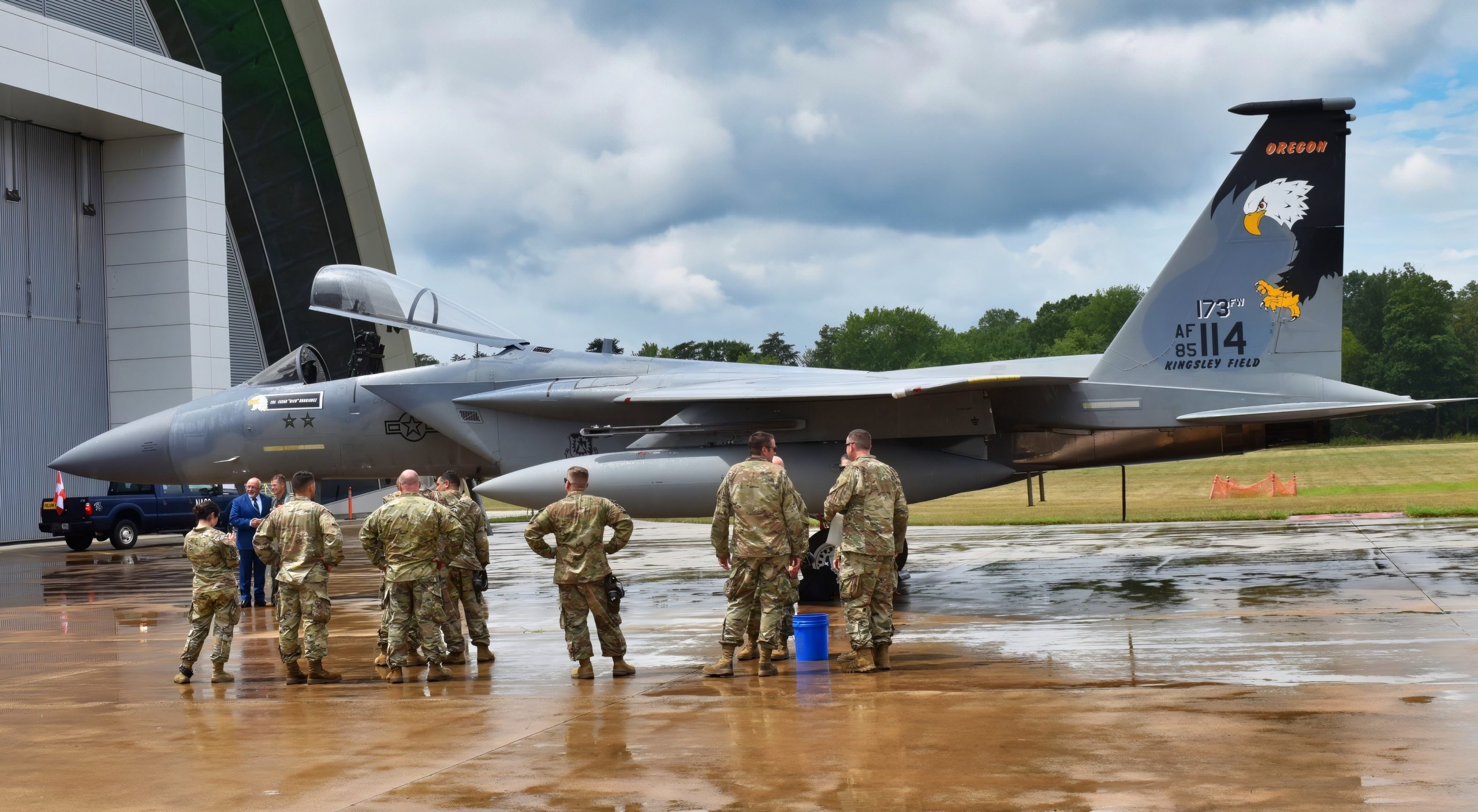
F-15C Fighter with Flight Crew. Image Credit: National Security Journal.
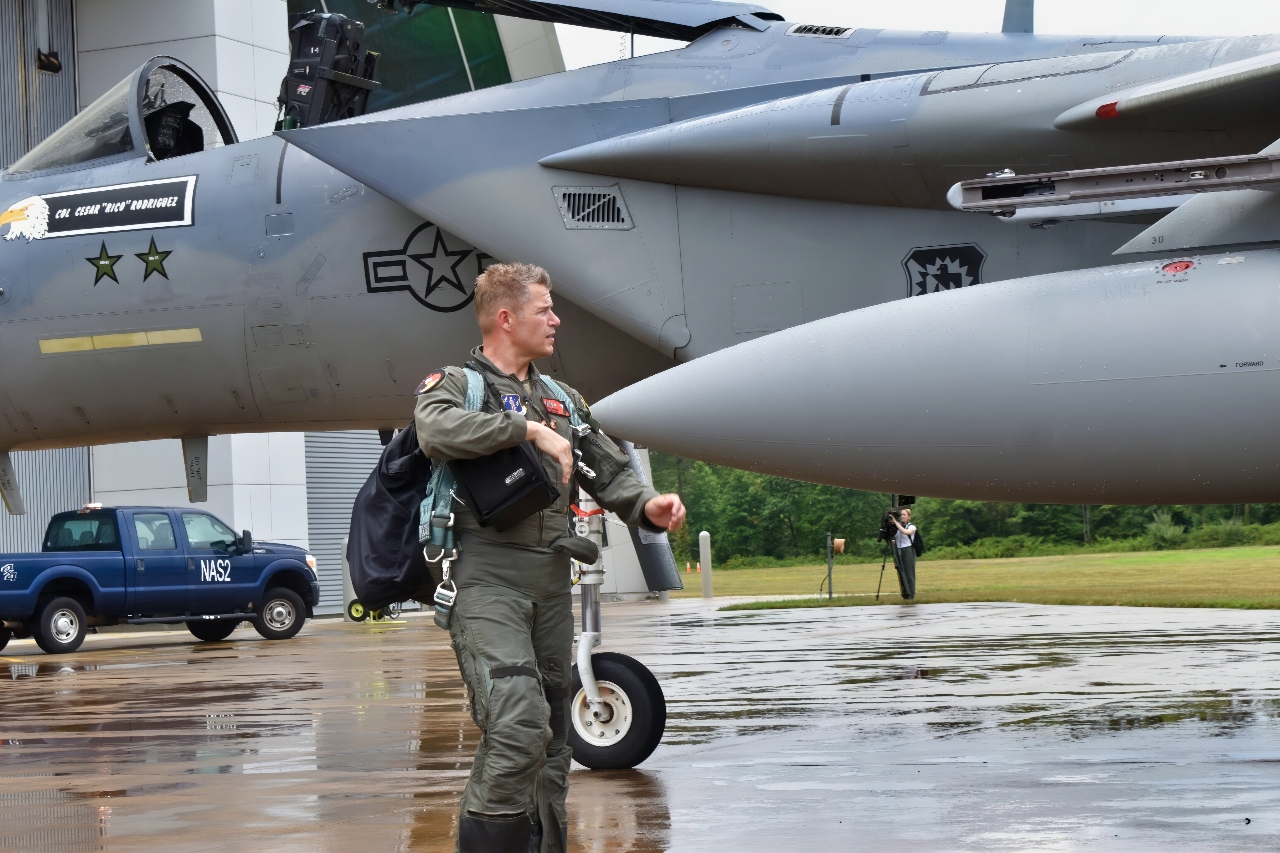
F-15C Pilot National Security Journal Photo. Image Credit: Brent M. Eastwood/National Security Journal.
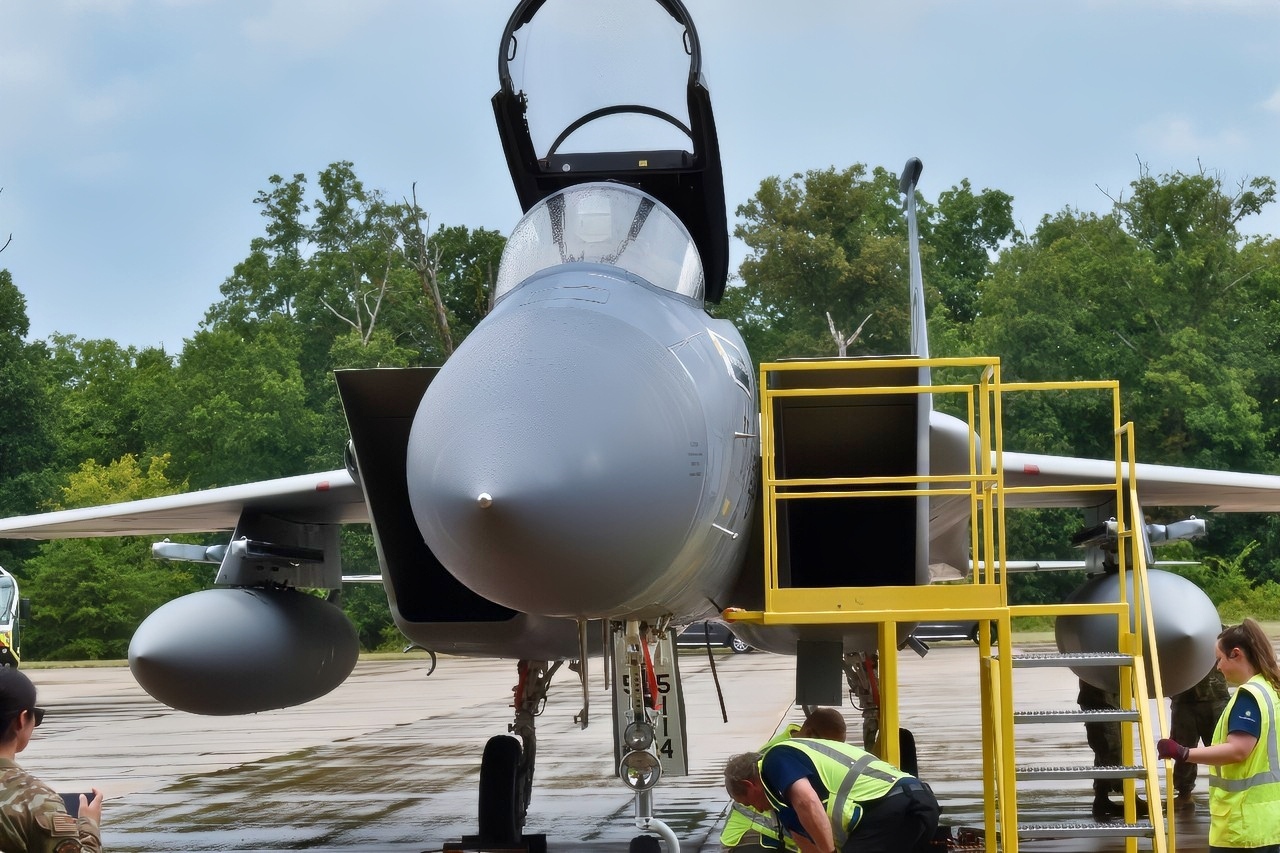
Rain on F-15C Fighter at Smithsonian National Security Journal Photo.
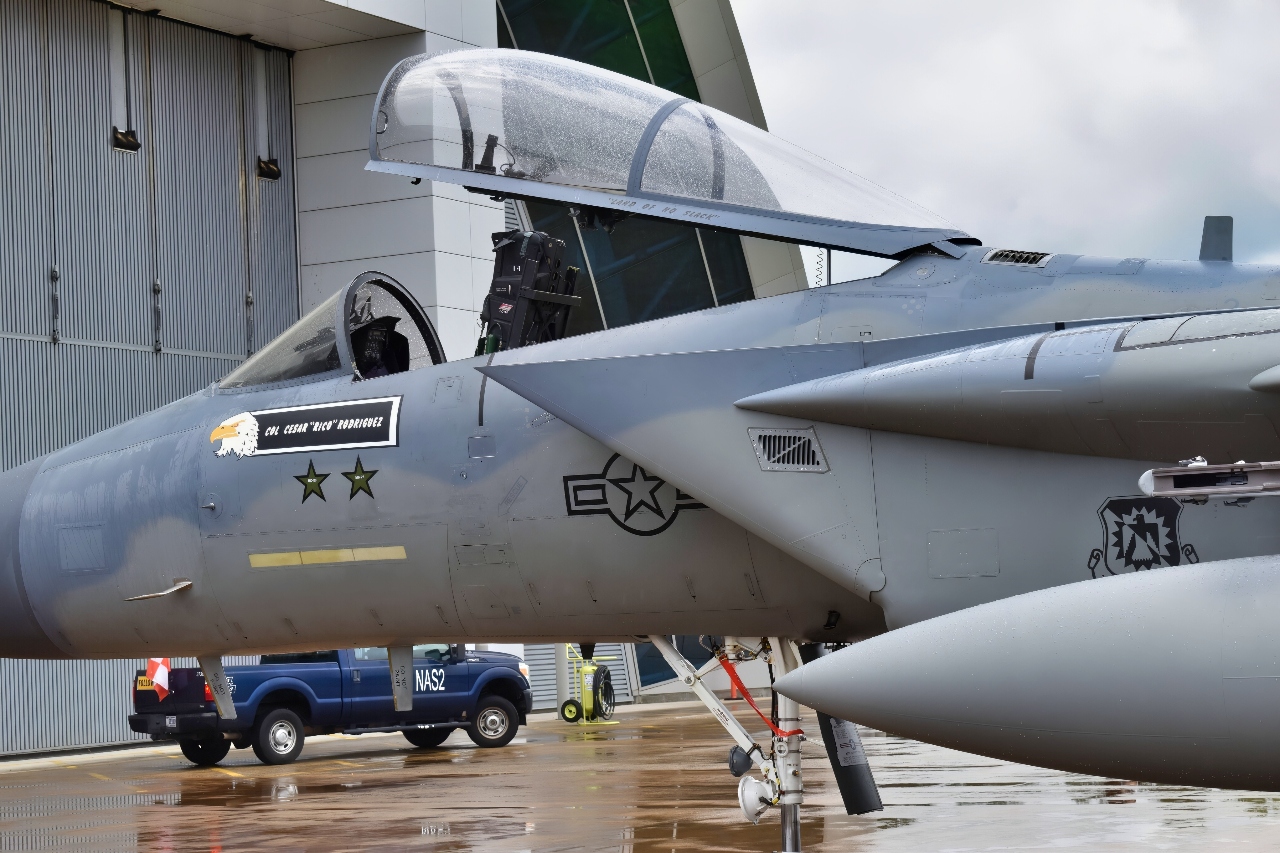
F-15C Fighter at Smithsonian August 13 2025. Image Credit: National Security Journal.

F-15C in the Rain at Smithsonian Outside DC. Image Credit: Brent Eastwood/National Security Journal.

F-15C Fighter at Smithsonian National Security Journal Photo
About the Author: Kris Osborn
Kris Osborn is the President of Warrior Maven – Center for Military Modernization. Osborn previously served at the Pentagon as a highly qualified expert in the Office of the Assistant Secretary of the Army—Acquisition, Logistics & Technology. Osborn has also worked as an anchor and on-air military specialist at national TV networks. He has appeared as a guest military expert on Fox News, MSNBC, The Military Channel, and The History Channel. He also has a Masters Degree in Comparative Literature from Columbia University.
More Military
The M113: America’s “Forgotten” APC That Just Won’t Quit
How British Aircraft Carriers Keep Sinking in War Games
Boeing F-47 NGAD Fighter: One Missing Fact Could Decide Its Fate
Canada Knows How to Sink U.S. Navy Nuclear Aircraft Carriers










